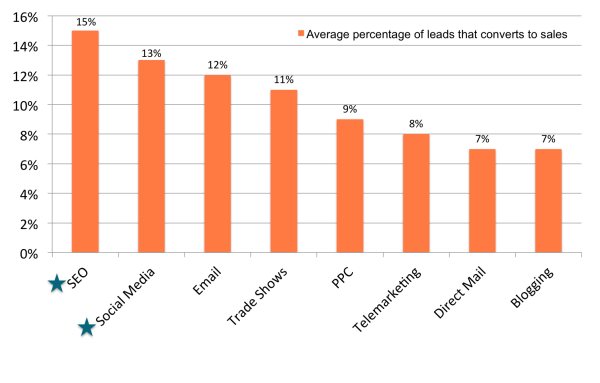I know you have probably heard over and over again that SEO is important to enhancing your website and growing your lead generation. That said, with all the technical changes in search algorithms it can be difficult to sort through and just focus on those items that will make a difference in Search Engine Optimization. What specific steps should I be taking? This is intended to give you a few actionable steps to keep your website SEO in good shape:
1. Build a Solid Keyword Plan.
a. Put together a list of words and terms relevant to your business or industry and prioritize the ones you’d like to rank for (these can also make good blog topic ideas). Remember that people are using full sentences or longer phrases more and more in their searches. Keep your target locations in mind as well.
b. Take advantage of SEO tools like Google Adwords Keyword Planner, Act-On Inbound or Hubspot’s Keyword Research Tool to check the rankings of your keywords and note their competition levels. Also, keep in mind that certain popular terms within your industry, will be extremely difficult for you to rank for, regardless of the size of your company.
2. Add appropriate Metadata on every page of your website.
a. The Page Title should contain no more than 70 characters.
b. The Meta Description shouldn’t exceed 50 characters.
c. The Meta keywords should have no more than 500 characters.
Note: Keywords that are more towards the front of the metadata copy will rank better in search.
3. Optimize the body copy of all webpages with keywords as naturally as possible (avoid keyword stuffing) for the purpose of human readers, not Google crawlers.
a. Headers & URLs: Place the most important keywords towards the beginning of your headers and URLs. Choose keywords you think will get clicked and shared the most. The term Social search refers to how content being shared on social media increases the amount of links and traffic to your webpages, and thereby improves search rankings.
b. Links: Include keywords in the text of your hyperlinks, especially in the first ones listed on a page. Note that it’s better to link to a page that is already ranking well in SEO.
c. Tags: Using tags sparingly. Tags themselves do not improve SEO; rather it’s the relating of one piece of content to another. Overusing tags, or creating tags that share the same words, looks like duplicate content to Google crawlers and you’ll be penalized.
d. Image Text/Alt Text: Use keywords in your image text. Not only will this be visible to search engines, but if an image doesn’t load properly for a visitor, they will at least still be able to read the text that describes that image.
4. Link Building. Sharing links with your Alliance Partners (and vica versa) will grow your website’s link profile, draw the attention of search engines, and direct more web traffic to your website.
5. Mobile Optimization. Since a significant portion of today’s internet search traffic comes from mobile devices, Google penalized the search rankings of webpages that aren’t mobile optimized.
6. Blogging. Every time you create a new blog page, you’re creating another dynamic page, or dynamic content. So by creating an ongoing blogging strategy, you’ll continuously be adding fresh content and developing a quantity of pages for Google to rank on your website.
As you can see, a solid SEO strategy is essential to driving more prospects to your website, and keeping them on your site. So by optimizing all the pages of your website, you increase your chances of those prospects finding you in local search results, retaining their attention, and eventually increasing your conversion rate. The graphs below put into perspective the marketing channels companies spend their time and energy on, versus what channel produces the best results: SEO.
SEO, Social Media Play Key Roles in Customer Acquisition1

According to this chart, SEO leads have a 15% close rate, while direct mail (outbound lead) only has a 7% close rate. So as you can see, working to improve your SEO is one of the most effective uses of your time and effort, in terms of converting sales, acquiring customers, and overall business success.
Just look to the real world for further proof on how SEO is benefiting businesses everywhere. Focusing on how HubSpot’s SEO Tools helped align their SEO practices, the following three companies were able to grow:
- Sobieski Services, a subset of The Sobieski Group providing plumbing, heating, and air conditioning solutions, increased their web traffic by 55%.2
- Legacy Dental boosted their website visits by 145% over the course of two years. In particular, their organic search inflated by 169%.3
- Paranet, a Managed Service Provider, increased their:
- Monthly organic leads by 2000%4
- Web traffic by 148%4
- Landing page conversion by 1000%4
By now, we hope we have given you enough information to help you get started applying stronger SEO practices for your business. Feel free to read more on inbound marketing topics in our other MSP Marketing Plan blog posts. Act-On and HubSpot also offer valuable SEO guidance on their respective websites as well.
We encourage you to download our Marketing Playbook for MSPs to help you in your marketing efforts:
If you’d like to discuss your inbound marketing, marketing automation, or your specific SEO objectives with us, please use the comment section below or contact Steve Perry directly at slperry@pereion.com.
Please also feel free to share this blog using the social media icons above. You can subscribe to the Pereion blog below, as well, to continue receiving information on how MSPs can utilize marketing strategies.
-resized-600.jpg?width=300&height=102&name=Pereion__Logo_(640x167)-resized-600.jpg)

-resized-600.jpg?width=248&height=64&name=pereion__logo_(640x167)-resized-600.jpg)



